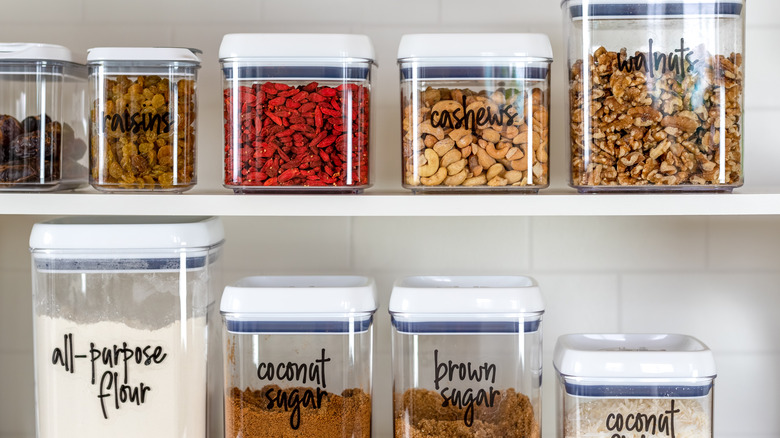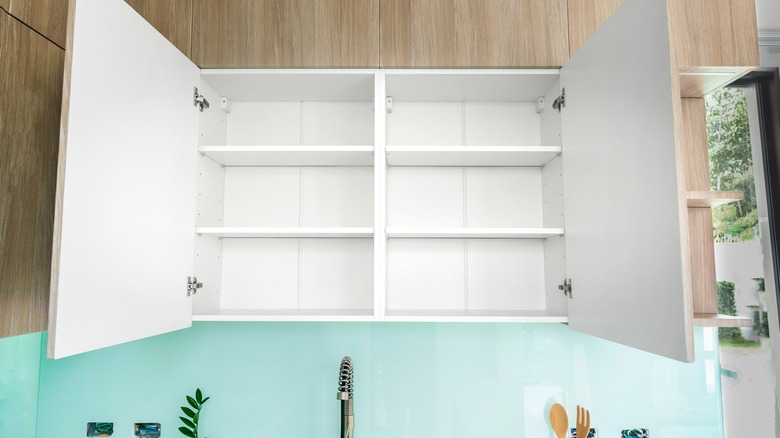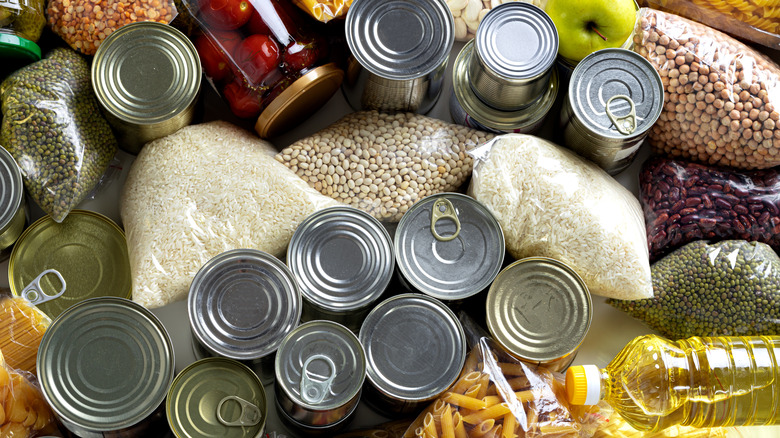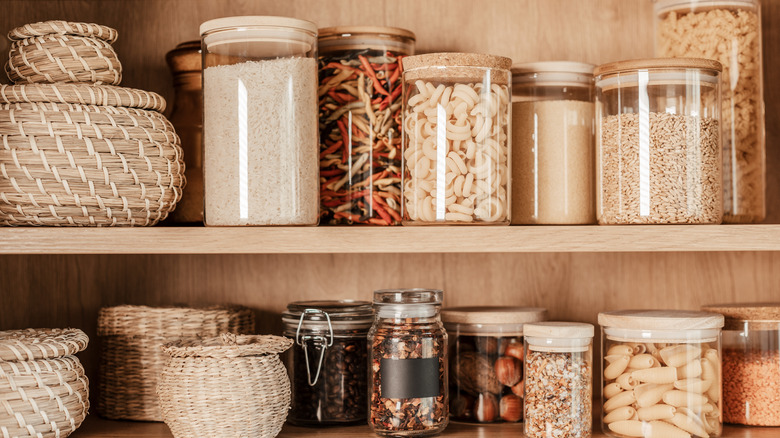How To Declutter Your Pantry
We may receive a commission on purchases made from links.
When you've come home from the grocery store with yet another canned good haul only to find you've got duplicates of each variety, or you can't reach the ramen without knocking over a jar of preserves, it's time to clean and declutter your pantry. This daunting task makes many people push it off or wish they could just dump everything in a bag and start over. This is a bad use of money and isn't sustainable, and at a time when many folks are trying to eat at home more, having an organized, functional pantry is essential.
Now, you don't need to worry about going to the organizing store and spending a bunch on boxes and label makers you'll never actually use to have a great pantry. In fact, through thoughtful organization and repurposing objects you have around the house, you may not even have to spend a dime. This guide will walk you through the tips and tricks to easily decluttering your pantry without losing your mind.
Clear the whole pantry out
Whether you're working with a walk-in pantry, small closet, or wall-mounted cupboard, the first step of decluttering your food storage is to remove absolutely everything. No shortcuts here. Even if you are positive you'll want to keep something exactly where it is, it still must come out. This is helpful for a couple of reasons. For one, it helps you to see just how much space you have to work with. This will help you to make tough calls, like deciding whether you need to throw out those freeze-dried mango slices you bought six years ago, and help you see just how much ick is on the cupboard shelves.
Take a warm, wet rag with your favorite cleaner and start to wipe down all of the shelves in your pantry. Mr. Clean Yellow is ideal for cutting through tough grease and sticky messes, but you can use a homemade greener cleaner if you prefer. Do not skip this step — it is essential in the decluttering process.
Check for expiration dates
You may be eager to just shove everything back in the pantry now, but this would be a mistake. The chances are that you have food that is past its expiration date in your current inventory. Check all of your dried goods for their expiration dates before putting them back in your cupboards. These are easily found on most canned and jarred products, but if your bulk goods are unlabeled, you will have to use your best judgment.
Remember, even if something doesn't "look" expired, dry goods like rice, nuts, and beans can go bad. At the very least, they can taste stale and flavorless and, at worst, have a rancid flavor. When you buy new bulk goods, be sure to label them with a piece of tape or permanent marker. When you're done sorting, discard the expired items in the trash. Then, give everything you've decided to keep a wipe down with a rag and a dab of warm water. You don't want to add dust and grime back into your freshly clean pantry.
Group your pantry goods
Decide on a few categories to group your pantry goods into. We recommend sorting the following as a starting point: oils and vinegar, canned goods, dried pasta and beans, baking supplies, snacks, nuts, spices, and miscellaneous. If you want to be able to actually see your inventory and take it from its original packaging, consider classic Mason jars, as they are extremely affordable and can be found in almost any home store. If you have pantry organizers, this is a great time to bring them out. If you don't, take a note from Marie Kondo's "The Life-Changing Magic of Tidying" and use old shoe boxes instead. Without the lid, you can store all sorts of odds and ends in shoe boxes.
While you may be going for that oh-so-desirable Pinterest look with a million hand-labeled jars, storing your pantry goods in a box is a great choice for a few reasons: you can easily pull them out as a group instead of standing on your tippy-toes while you examine each jar, and if you have a syrup spill or leak, it will go onto the box and not your cupboards, making the next round of cleanup a breeze.
Finally, it's time to put all of your boxes back. Keep the items you use most often on the lower shelves so that you don't have to get the stepladder out too often. Then take a minute to step back and look at your totally beautiful, functional pantry.




